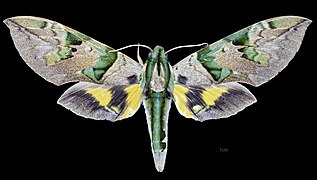
Eumorpha labruscae, the gaudy sphinx, is a moth in the family Sphingidae.

Perigonia lusca, the half-blind sphinx or coffee sphinx, is a moth of the family Sphingidae. It was first described by Johan Christian Fabricius in 1777.

Adhemarius gannascus is a moth of the family Sphingidae first described by Caspar Stoll in 1790.

Eumorpha anchemolus, the anchemola sphinx moth, is a moth of the family Sphingidae. The species was first described by Pieter Cramer in 1780.

Eumorpha elisa is a moth of the family Sphingidae.

Eumorpha satellitia, the satellite sphinx, is a moth of the family Sphingidae. The family was first described by Carl Linnaeus in 1771. It lives from Brazil and northern Argentina north through Central America, Mexico, and the West Indies to south Texas and southern Arizona.

Eumorpha triangulum is a moth of the family Sphingidae.

Eumorpha vitis, known as the vine sphinx, is a moth of the family Sphingidae.

Xylophanes aglaor is a moth of the family Sphingidae first described by Jean Baptiste Boisduval in 1875.

Xylophanes mirabilis is a moth of the family Sphingidae. It is known from Colombia.

Xylophanes sarae is a moth of the family Sphingidae.
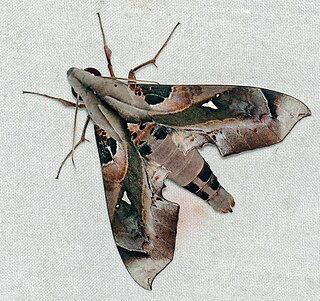
Madoryx plutonius is a moth of the family Sphingidae.
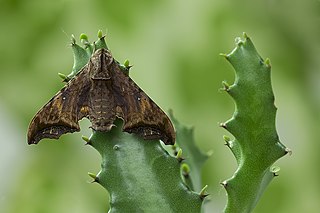
Nyceryx riscus is a moth of the family Sphingidae.
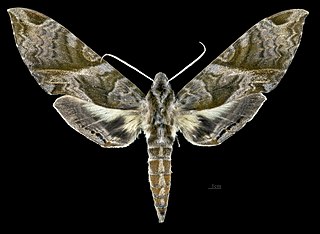
Eumorpha cissi is a moth of the family Sphingidae.
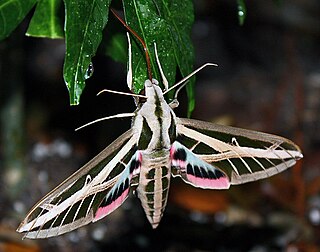
Eumorpha fasciatus, the banded sphinx, is a moth of the family Sphingidae. The species was first described by Johann Heinrich Sulzer in 1776.

Eumorpha obliquus is a moth of the family Sphingidae. It is found from Belize, Guatemala, Nicaragua and Costa Rica south to Bolivia. It is also present in Brazil and Guadeloupe.

Eumorpha translineatus is a moth of the family Sphingidae.
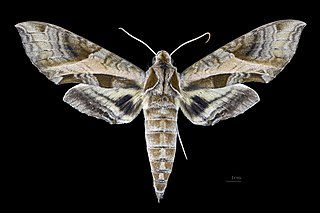
Eumorpha megaeacus is a moth of the family Sphingidae.
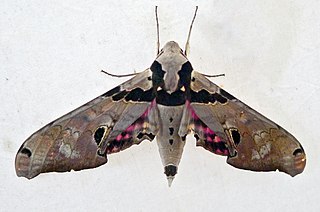
Adhemarius dentoni is a species of moth in the family Sphingidae. It was described by Benjamin Preston Clark in 1916.

Adhemarius sexoculata is a species of moth in the family Sphingidae. It was described by Augustus Radcliffe Grote in 1865,



